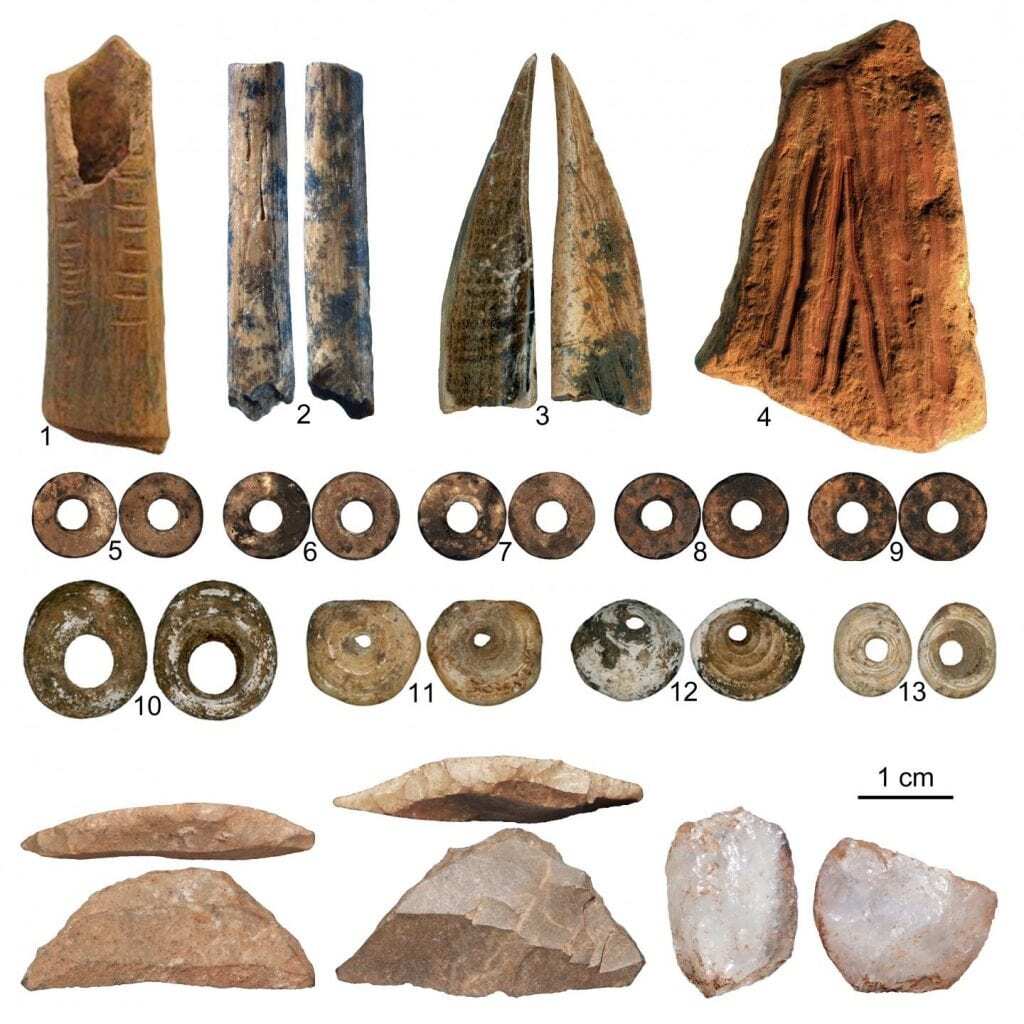Forty-eight thousand-year-old crayons and shell beads were among a treasure trove of items unearthed by archaeologists at a cave in Kenya.
Archaeologists have discovered more than 30,000 items at the site which is shedding new light on the crucial time period when Homo sapiens first started showing signs of modern behaviour.
The research was led by archaeologist Dr Ceri Shipton of The Australian National University (ANU) School of Culture, History and Language, who said the Panga ya Saidi cave sequence dates back 78,000 years and is the only known site in East Africa with an unbroken archaeological record of human inhabitation.
“It is the most beautiful site I have ever worked on. As soon as I saw it I knew it was special,” Dr Shipton said.
“It has a continuous record with people there right up until 500 years ago.
“The site has amazing levels of preservation with so many of the artefacts in mint condition.”
Dr Shipton said the site, on the Kenyan south coast just north of Mombasa, was providing new insights into the Later Stone Age – a period of time beginning about 67,000 years ago associated with the rise of modern human behaviour and culture in Africa.
“You start to see things like decorated bones, beads made from marine shell or ostrich eggs, miniaturized stone tools, and bones carved into things like arrow points. This is the oldest date we have for when this behaviour is first observed,” he said.

“Previous sites relating to this early period of modern human behaviour have all been in South Africa and the East African Rift Valley, this is the first site on the coast of East Africa and the first with such a continuous record.”
Dr Shipton said it was highly unusual to find a site where early Homo sapiens were living in a tropical forest.
“Early humans liked to be on open grassland where there is a lot of large animals for hunting,” Dr Shipton said.
“These people were living in tropical forest hunting smaller animals like monkeys and small deer, animals you may need more sophisticated technology to catch.”
“What is striking about this record is the innovations you see in technology and material culture, and the ability to exploit both forest and savannah environments. It is this kind of behavioural flexibility that allowed our species to populate the rest of the world outside of Africa.”
Professor Andy Herries from La Trobe University Archaeology undertook archaeomagnetic analysis of the cave sediments which showed that the transition in stone tool technology took place during a particularly cold and dry glacial period.
“the site documents the earliest evidence of this style of microlithic Later Stone Age technology and shows how early modern humans were able to adapt to a range of new environments at this time,” Professor Herries said.
“It is a small precursor to our eventual habitation of every corner and environment on the planet.”
Of more than 30,000 items found at the site, some of the most remarkable include 48,000 year old red ochre crayons and engraved bones. Dr Shipton was struck by the high-level preservation of the artefacts.
“The stone tools are still sharp. The beads and engraved bones have survived intact which is really rare,” he said.
“On the crayons we can still see the grooves where they have been used. They’re in the same condition now as when people discarded them.”
The study was published on Wednesday in the Nature Communications journal. The project was led by the Max Planck Institute for the Science of Human History.
AUSTRALIAN NATIONAL UNIVERSITY
Header Image – This is the Panga ya Saidi cave – Image Credit : Dr Ceri Shipton





